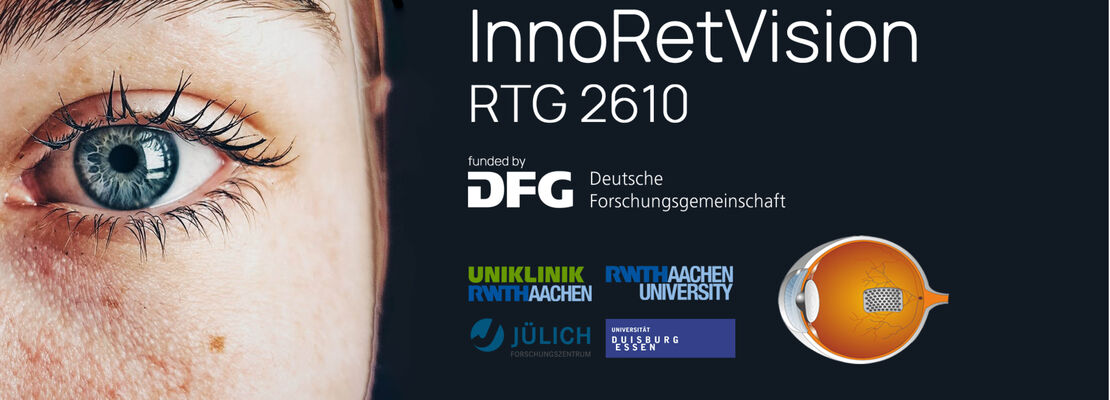General Information
Neuroprosthetics is an emerging field in biomedical research and medical technology development. The loss of sensory or motor function has a significant negative impact on the quality of life and human well-being. Although significant progress has been made in ophthalmology in the past, conditions leading to untreatable blindness in a large number of people still exist. Restoration of vision can be achieved under these conditions by repairing cells with gene therapy, optogenetics, replacing cells with stem cells, or by bridging sensoric function with neuroprosthetic devices. All these concepts do have their advantages and disadvantages. In this RTG we are focussing on the neuroprosthetic approach.
RTG 2610 – Innovative Retinal Interfaces for Optimized Artificial Vision – InnoRetVision is a DFG funded Research Training Group dedicated to train graduate students with a background and interest in electrical engineering, neuroengineering, biophysics, sensory or neurophysiology, and or vision restoration.
Aim: Our aim is to explore innovative methods for the stimulation of the visual system to improve current techniques for vision restoration in blind humans.
Objective: Previous research showed that implantable retinal stimulators can restore basic visual functions in blind patients. However, the functional results did not meet the initially posed expectations. We believe that this can be explained by both limitations in the technology and by the biology of the disease. We are convinced that a better understanding of the mechanisms of degeneration in the visual system and the use of innovative approaches in different technology fields can significantly contribute to the improvement of such systems. Particularly through an intensive interdisciplinary approach in research and graduate education, we will achieve substantial improvements in the long term and sustainably for the blind. With the RTG we are combining research and specialized training in this field.
Research: The research program is divided into three working fields. Working Field A focusses on the development and realization of new stimulation base structures and on new electrodes with innovative materials. In Working Field B, fundamental work is carried out in order to be able to control and activate large numbers of high-density electrodes. One of the goals is the realization of hybrid stimulators, which in addition to pure electrical stimulation, can also deliver neuropharmaceuticals into the tissue in order to optimize stimulation and influence the degradation. Working Field C carries out the biomedical work. This involves the elucidation of degeneration mechanisms in the retina and the higher centers of the visual system as well as new less invasive implantation techniques.
Training: The research program is accompanied by a highly interdisciplinary training concept. Since technical systems are used and will be used more frequently in many organ systems in the future, especially in the case of non-feasible replacement concepts, we are convinced that engineers and scientists must be further qualified both in biology and medical-related translational technology and engineering development. Although Master's degree programs in medical technology or biomedical engineering provide initial insights into the development and operation of such complex systems, they are not sufficient to train the experts who can advance the field of medical technologies for the next decades. The RTG InnoRetVision combines an expertise to a width not found in traditional training programs to educate these experts. The RTG is focused on the development of retinal implants, however, the improvement of technical processes can also be transferred to other neuroimplant systems.

